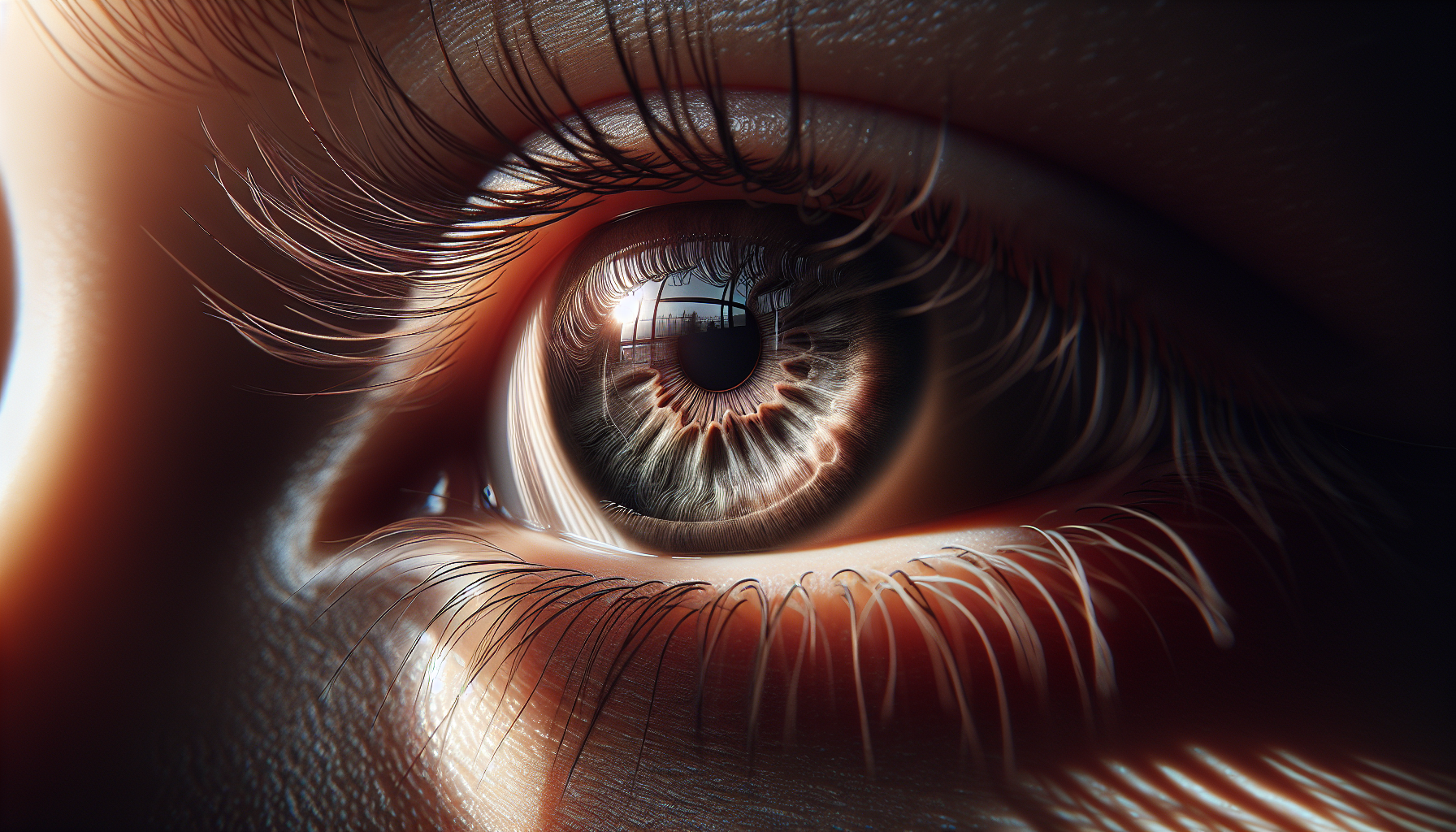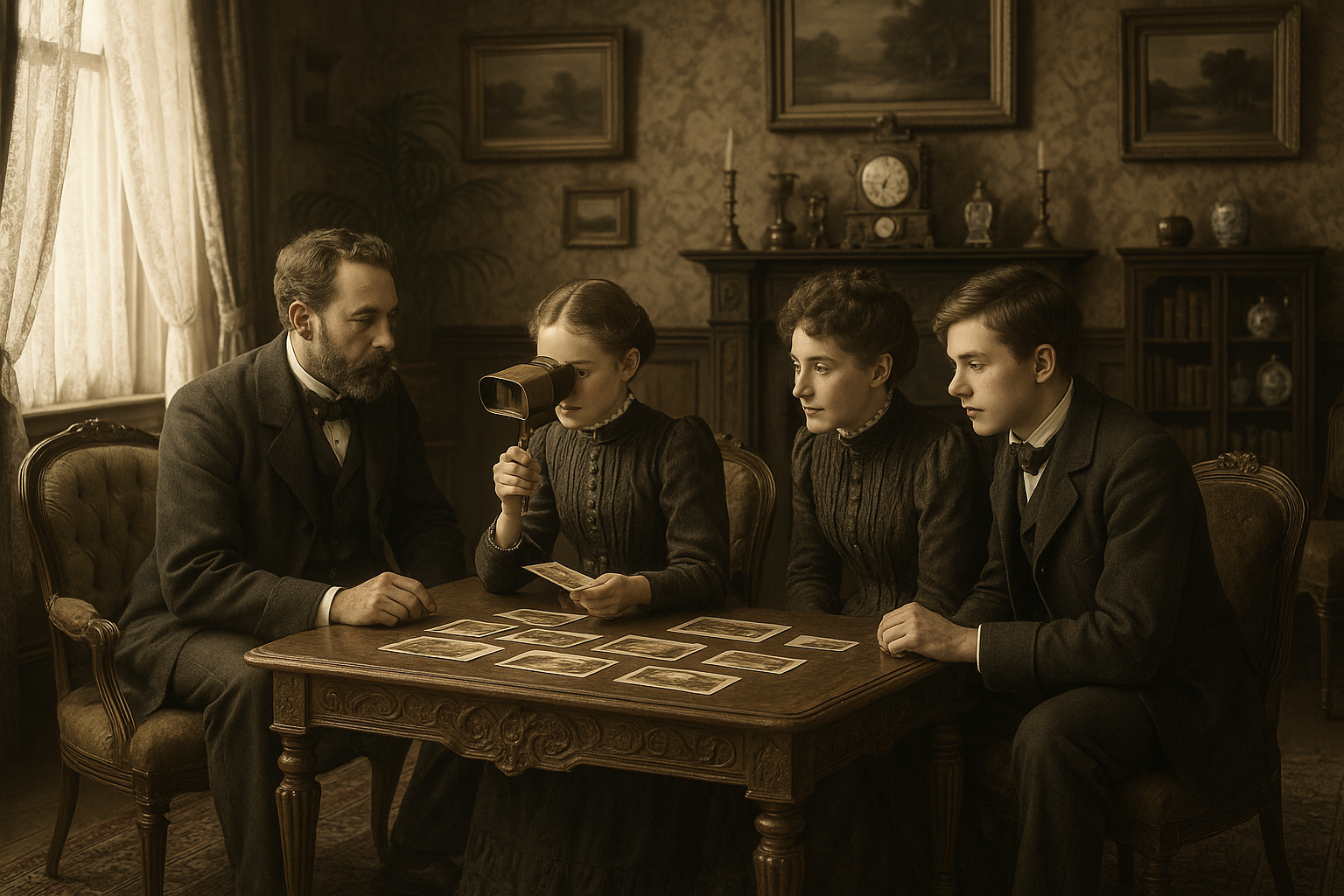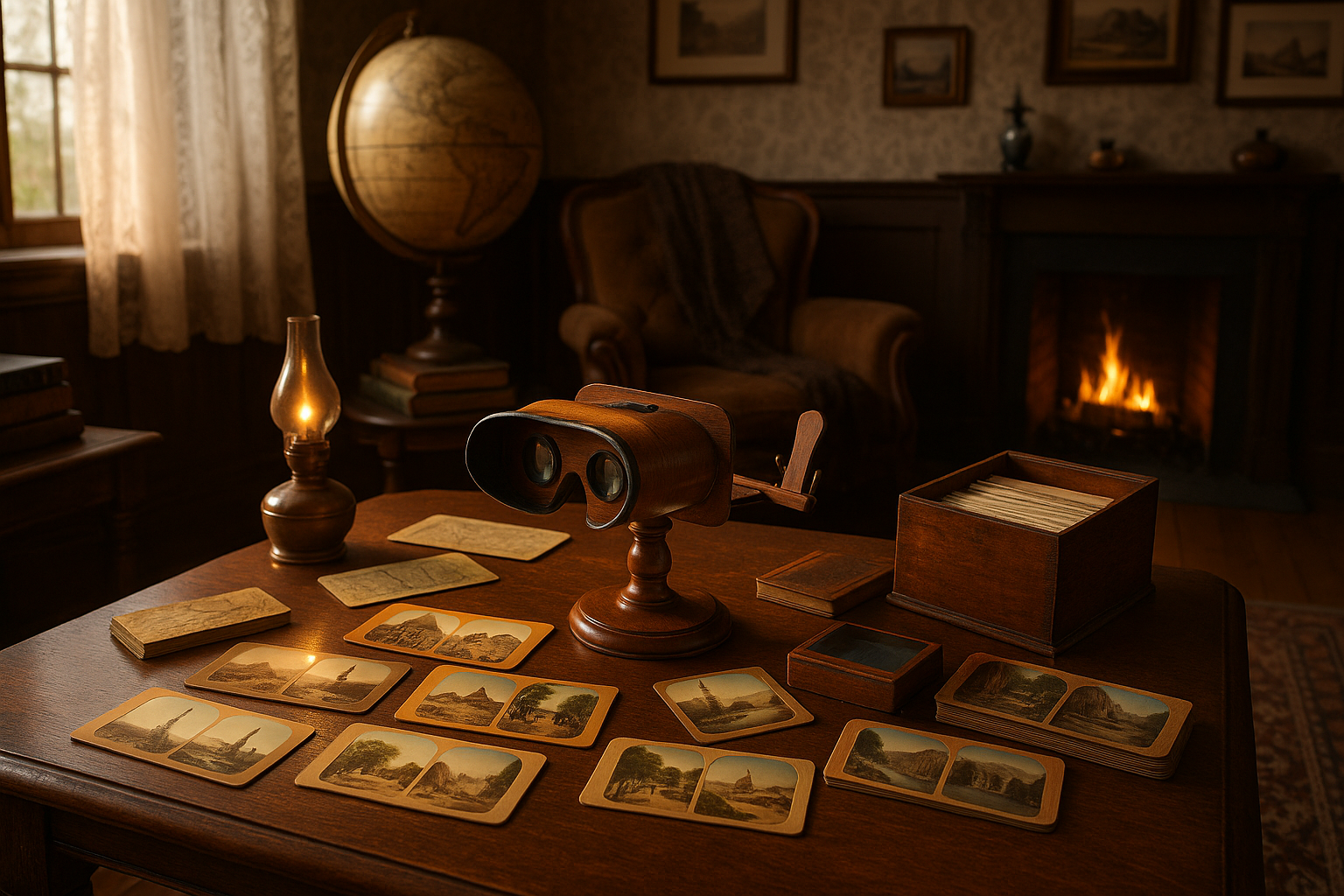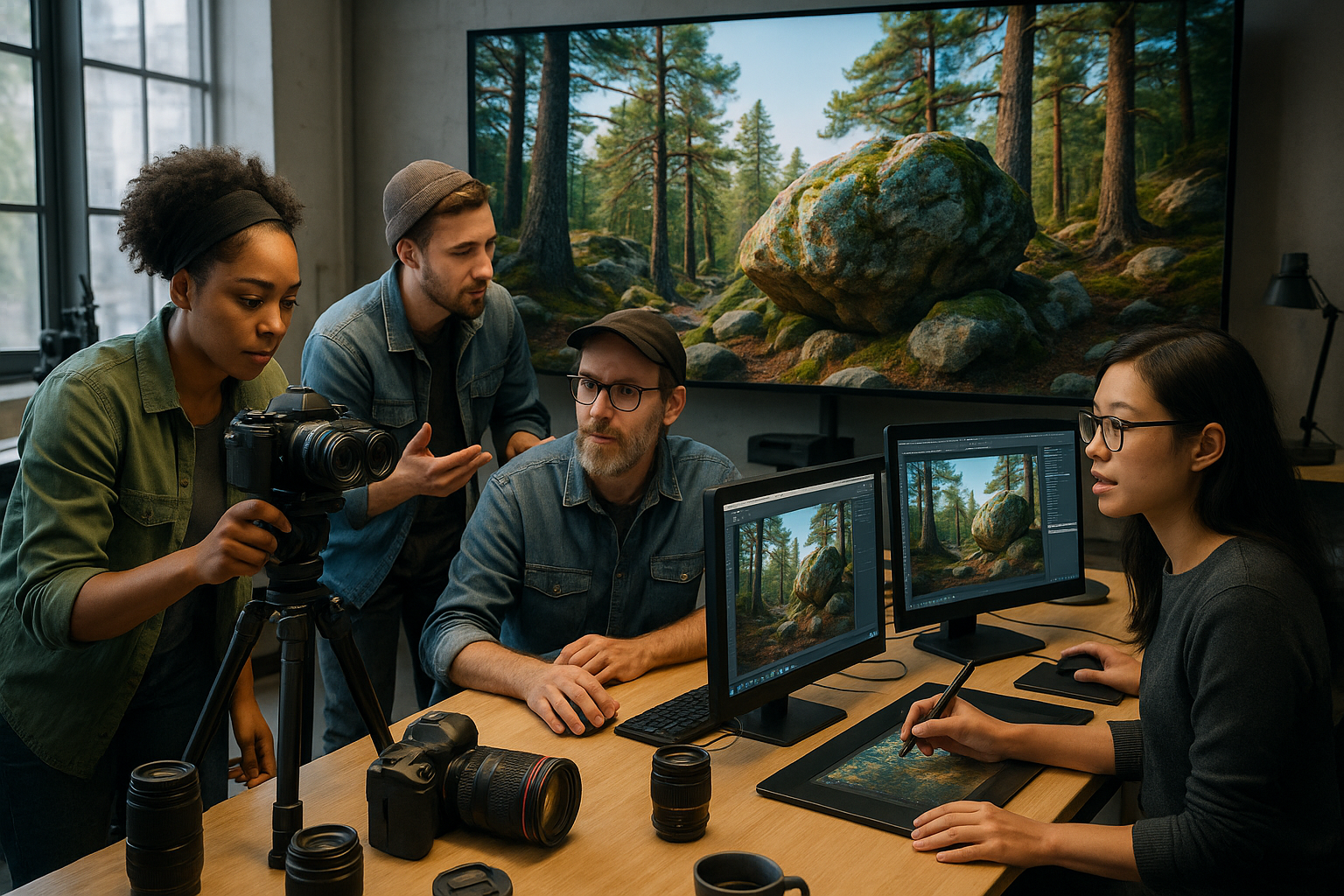In a world constantly illuminated by screens and artificial lights, it’s easy to forget the profound mysteries that lie in the simple act of seeing. Have you ever paused to consider the dance of light and shadow that brings depth to your everyday experiences? The human eye, an organ so essential yet often taken for granted, is at the heart of this delicate interplay. In this article, we embark on an enthralling journey to uncover the secrets of obscura, exploring the fascinating ways our eyes interact with the realms of light and shadow. Prepare to see the world through a new lens, as we delve into the science, art, and wonder that light and shadow create. 🌟
Our adventure begins with the basics, exploring the anatomy of the human eye and its incredible capability to perceive the nuances of light and darkness. We will unravel the complexities of how light enters the eye, is focused by the lens, and transformed into electrical signals that our brain interprets as images. Understanding this process lays the groundwork for appreciating the intricacies of visual perception and the subtle ways light and shadow influence our interpretation of the world. This foundation is not only essential for science enthusiasts but also for artists, photographers, and anyone who wishes to deepen their understanding of visual experiences.
As we move forward, we will explore the psychological effects of light and shadow, delving into how different lighting conditions can evoke emotions and alter our moods. Have you ever noticed how a brightly lit room feels more energizing, while a dimly lit space invites relaxation and introspection? By examining the psychological impact of lighting, we gain insights into how environments can be crafted to enhance well-being and creativity. Additionally, we will touch on the cultural significance of light and shadow, exploring how these elements have been used symbolically throughout history in various art forms and spiritual practices.
Our exploration wouldn’t be complete without venturing into the realm of optical illusions and the tricks they play on our perception. Through a series of captivating examples, we will discover how our brains sometimes misinterpret visual information, leading to surprising and often delightful outcomes. These illusions highlight the extraordinary capacity of our minds to fill in gaps, make assumptions, and even be fooled by the very light that allows us to see. By understanding these phenomena, we gain not only an appreciation for the complexity of vision but also a greater awareness of the potential for misperception in our daily lives.
Finally, we will turn our attention to the future of vision science, looking at how cutting-edge research and technology are unlocking new possibilities in understanding and enhancing human sight. From advanced imaging techniques that allow us to see deeper into the eye, to innovations in artificial vision that aim to restore sight to the visually impaired, the field is brimming with promise. As we explore these developments, we’ll consider the ethical implications and the exciting potential for transforming how we interact with the world around us.
Join us on this enlightening journey as we unlock the secrets of obscura, celebrating the profound connection between the human eye and the ever-present dance of light and shadow. By the end of this exploration, you’ll not only have a deeper understanding of visual perception but also a renewed sense of wonder for the intricate beauty that light and shadow bring to our lives. 🔍✨
The Human Eye: A Marvel of Natural Engineering
The human eye is an intricate organ that plays a crucial role in our perception of the world. This spherical marvel works tirelessly to capture and process the vast array of light and shadow that envelops our daily lives. At the heart of this process are photoreceptor cells—rods and cones—that convert light into electrical signals, which are then interpreted by the brain as visual images. The eye’s ability to adapt to varying light conditions is nothing short of extraordinary, enabling humans to see in environments ranging from the bright midday sun to the dim light of a moonlit night.
Understanding the structure of the eye provides insight into how it interacts with light and shadow. The cornea and lens focus light onto the retina, where the photoreceptor cells are located. The retina’s complex architecture is key to its functionality. The fovea, a small central pit composed mainly of cones, is responsible for sharp central vision and color perception. Surrounding this area, rods are more densely packed and are vital for peripheral and low-light vision. These components work in harmony to provide a seamless visual experience, allowing us to navigate and appreciate the richness of our surroundings.
The process of vision begins with light entering the eye through the cornea, passing through the aqueous humor, lens, and vitreous humor before finally reaching the retina. This journey is not just about the mechanical passage of light but involves the delicate interplay of focusing and refraction. The lens’s ability to change shape, known as accommodation, is essential for focusing on objects at varying distances. The eye’s adaptability extends beyond just focusing, as it is also equipped with mechanisms to regulate the amount of light entering the eye through the pupil, which dilates and contracts in response to lighting conditions.
Table: Comparison of Rods and Cones
| Characteristic | Rods | Cones |
|---|---|---|
| Light Sensitivity | High | Low |
| Color Perception | None | Yes |
| Location in Retina | Peripheral | Central (Fovea) |
| Function | Low-light vision | Color and detail |
The Interaction of Light and Shadow
Light and shadow are fundamental elements in the visual landscape, shaping the way we perceive depth, form, and texture. The human eye’s ability to interpret these elements is deeply rooted in the physics of light, which travels in waves and can be absorbed, reflected, or refracted by different surfaces. Shadows are created when objects block the path of light, resulting in areas of lower illumination. This contrast between light and shadow is critical for visual perception, helping us to discern the shapes and positions of objects within our environment.
The phenomenon of chiaroscuro, a term derived from the Italian words for “light” (chiaro) and “dark” (scuro), highlights the interplay of light and shadow. This technique has been used by artists for centuries to create a sense of depth and volume in their work. In nature, the eye uses similar principles to perceive the three-dimensionality of objects. By analyzing the gradations of light and shadow, the brain constructs a mental image that helps us understand the spatial relationships between objects.
In addition to static shadows, the human eye is adept at processing dynamic light changes, such as those encountered when moving from a bright exterior to a dimly lit interior. This adaptability is facilitated by the rapid response of the eye’s photoreceptors and the brain’s ability to process varying intensities of light. The eye’s dynamic range—the spectrum of light intensities it can perceive—far exceeds that of most artificial cameras, making it a superior tool for navigating complex and changing visual environments. For a deeper understanding, check out this informative video: Light and Shadow: Understanding Chiaroscuro – Art Academy Channel.
Color Perception and Visual Illusions
Color perception is a fascinating aspect of human vision, deeply intertwined with the interaction of light and shadow. Cones in the retina are responsible for detecting color, with three types of cones sensitive to different wavelengths of light corresponding to red, green, and blue. This trichromatic vision allows us to perceive a wide spectrum of colors through the combination and variation of these three primary colors. However, color perception is not just a matter of biology; it is also influenced by the context in which colors are viewed.
Visual illusions are intriguing phenomena that reveal the complexities of color perception. These illusions occur when the brain interprets visual information in ways that differ from objective reality. A classic example is the checker shadow illusion, where two squares of the same shade appear to be different colors due to the context of surrounding light and shadow. Such illusions highlight the brain’s role in processing visual information, emphasizing that perception is not merely a passive reception of stimuli but an active construction of reality.
The study of visual illusions not only provides insights into how we perceive color but also demonstrates the adaptability and creativity of the human brain. These illusions can challenge our understanding of reality, offering a glimpse into the complexities of sensory processing. As you explore these concepts further, consider how artists and designers utilize light, shadow, and color to evoke emotions and convey meaning in their work. Engage with this topic by watching the video below: The Science of Color and Illusions – Visual Arts Channel.
List: Key Elements of Visual Perception
- Light and Shadow Interaction
- Color Perception
- Depth and Volume Interpretation
- Visual Illusions
- Dynamic Range Adaptability

Conclusion
Certainly! Here’s a conclusion for your article on the fascinating exploration of how the human eye interacts with light and shadow:
—
In conclusion, the intricate dance between light and shadow is not just a marvel of nature but a profound area of study that sheds light on the very essence of human perception. Throughout this article, we’ve delved into the mesmerizing world of Obscura, unraveling the secrets of how our eyes perceive and interpret the myriad nuances of light and darkness.
We began by exploring the fundamental mechanisms of the human eye, focusing on the role of photoreceptors, namely rods and cones, in capturing and processing light. This biological foundation is crucial for understanding how we distinguish between colors, brightness, and contrast. Our journey then led us to the historical evolution of optical studies, where we saw how pioneers like Ibn al-Haytham and Leonardo da Vinci laid the groundwork for modern optics, inspiring generations of scientists and artists alike.
Moreover, we examined the psychological aspects of light and shadow, highlighting how they influence our emotions and perceptions. The chiaroscuro technique in art, for instance, exemplifies how contrasting light and dark can create dramatic tension and highlight focal points, thus shaping the viewer’s experience.
The interplay between light and shadow also has practical implications in fields such as photography, architecture, and cinematography. Understanding how to manipulate light can transform a mundane scene into something extraordinary, evoking specific moods and enhancing aesthetic appeal.
As we reflect on the importance of this topic, it becomes evident that light and shadow are not merely physical phenomena but powerful tools that impact various facets of life. They can inspire creativity, influence behavior, and even affect our well-being. This understanding is not only relevant for scientists and artists but for anyone seeking to enhance their visual experience of the world.
In light of these insights, I encourage you, dear reader, to observe the world with a renewed perspective. Notice how light and shadow play their roles in your daily surroundings, and consider how you might use this awareness to enrich your environment and creative endeavors. Share your thoughts and experiences with others, sparking conversations that may lead to new discoveries and appreciations.
To further explore this captivating subject, I recommend visiting reputable resources such as the National Eye Institute and Optics for Kids, where you can find more detailed information and engaging educational materials.
Thank you for joining this exploration of Obscura. May the knowledge gained here inspire you to look beyond the surface and appreciate the profound beauty that lies in the interplay of light and shadow. ✨
—
Toni Santos is a visual historian and artisan whose creative lens is captivated by the forgotten marvels of antique optical devices. Through his thoughtful storytelling, Toni revives the instruments that once transformed light into wonder—camera obscuras, magic lanterns, kaleidoscopes, and other ingenious tools that shaped our earliest visual imaginations.
His journey is rooted in a fascination with how humans have long sought to bend, reflect, and reveal the unseen. Whether tracing the mechanical poetry of 19th-century projectors or illustrating the tactile elegance of early lenses, Toni’s work invites us to see vision itself as an evolving art form.
Blending handcrafted design with historical inquiry, Toni brings to life the material soul of these devices—celebrating not just how they functioned, but what they meant. His creations and curated stories illuminate a world where science, illusion, and beauty were intricately linked through glass and brass.
As the curator of Vizovex, Toni shares detailed studies, reconstructed artifacts, and immersive content that help others rediscover the origins of visual technology and the magic of analog perception.
His work is a tribute to:
The craftsmanship behind early visual instruments
The wonder of seeing through the eyes of another century
The intersection of optics, art, and imagination
Whether you’re a collector, a designer, or someone drawn to the lost poetry of vision, Toni welcomes you into a world where light is a storyteller—one prism, one lens, one forgotten invention at a time.





